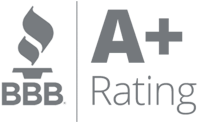
Huddle Room vs Conference Room: Differences, Similarities, & Use Cases
Key Takeaways
1. Huddle Rooms Maximize Small Meeting Efficiency
Huddle rooms are compact spaces designed two to six people that address a critical workplace reality: 73% of meetings involve only two to four people. These cost-effective spaces ($5,000 to $15,000 to outfit) feature plug-and-play technology and casual atmospheres that encourage spontaneous collaboration without the scheduling delays of traditional conference rooms.
2. Conference Rooms Remain Essential for Formal Business Functions
Conference rooms accommodate 8 to 20+ participants and provide the professional setting required for client presentations, board meetings, and executive sessions. Their sophisticated AV infrastructure and formal atmosphere project organizational competence that smaller spaces cannot match, though they require significantly higher investment ($20,000 to $100,000+).
3. Technology Complexity Differs Dramatically Between Space Types
Huddle rooms embrace simplicity with all-in-one video bars and wireless sharing that allow teams to start collaborating within seconds without IT support. Conference rooms demand complex multi-component systems including multiple cameras, ceiling microphones, professional speakers, and control panels that often require technical assistance to operate.
4. Both Meeting Spaces Support Hybrid Work Differently
Huddle rooms excel at bridging the gap between in-office and remote workers by creating intimate settings where one to two on-site employees can meaningfully connect with virtual colleagues. Conference rooms serve hybrid needs for larger gatherings requiring advanced presentation capabilities and the capacity to accommodate both substantial in-person audiences and multiple remote participants simultaneously.
5. Successful Workplaces Need Both Space Types
The choice between huddle rooms and conference rooms isn't either/or—most organizations benefit from having both to support diverse meeting needs. Analyzing meeting patterns reveals that while huddle rooms handle the majority of daily collaboration, conference rooms remain indispensable for training sessions, company-wide announcements, and situations where professional presentation capabilities and formal atmosphere are non-negotiable.
The modern workplace has evolved, and the one-size-fits-all conference room no longer meets today's diverse team needs. As hybrid work becomes the norm, businesses are rethinking meeting space design.
Enter the huddle room: a compact, technology-enabled meeting space designed specifically for small group collaboration. But how does it compare to traditional conference rooms, and when should you use one over the other?
In this blog post, we'll explore the key differences between huddle rooms and conference rooms, identify their similarities, and provide clear use cases to help you determine which space best serves your team's needs. Whether you're managing a growing business or utilizing flexible workspace solutions like those at Davinci Coworking Spaces, understanding these distinctions is essential for optimizing productivity and creating an efficient collaborative environment.
What is a Huddle Room?
Understanding what makes huddle rooms unique helps explain their growing popularity.
Defining the Huddle Room
A huddle room is a small, intimate meeting space designed to accommodate two to six people for quick, informal collaboration. The name draws inspiration from sports huddles, where teams gather to discuss strategy quickly. These workplace spaces allow teammates to regroup, share ideas, and collaborate without formality.
These compact spaces typically occupy 100 to 150 square feet with some modular pods as small as 38 to 59 square feet. The key characteristic that sets huddle rooms apart is their focus on spontaneous, informal meetings—designed for teams that need to collaborate quickly without scheduling a full conference room.
Key Features of Huddle Rooms
Key features that distinguish huddle rooms include:
Compact and Efficient Design
Huddle rooms maximize space efficiency by transforming underutilized corners or awkwardly shaped areas into functional collaboration spaces. Their small footprint makes them ideal for optimizing every square foot office real estate without major renovations.
Technology-Enabled Collaboration
Modern huddle rooms are equipped with video conferencing capabilities, screens, and audio equipment to support hybrid meetings. The setup typically includes all-in-one video bars or BYOD solutions—plug-and-play systems that allow team members to connect their devices and start collaborating within seconds.
Flexible Accessibility and Informal Atmosphere
Unlike traditional conference rooms requiring advance booking, huddle rooms are designed for spontaneous use with minimal setup time. They feature comfortable furniture like sofas or compact seating arrangements rather than formal boardroom tables, reducing barriers to communication and encouraging open dialogue.
Acoustic Privacy
Despite their informal nature, huddle rooms provide acoustic isolation for private discussions, ensuring teams can meet without disrupting others—crucial in open-plan work environments.
What Is a Conference Room?
Conference rooms remain the backbone of corporate communication and formal business gatherings.
Defining the Conference Room
A conference room is a larger, more formal meeting space designed to accommodate 8-20 or more participants. These traditional meeting venues have long served as settings for executive meetings, client presentations, team gatherings, and formal decision-making sessions.
Conference rooms typically require 300-600+ square feet, with larger rooms exceeding 600 square feet for groups over 20 people. The key characteristic that defines conference rooms is their formal, professional atmosphere—they're purpose-built for high-stakes meetings, strategic discussions, and situations where presentation capabilities and professional image matter most.
Key Features of Conference Rooms
Conference rooms offer comprehensive professional meeting capabilities:
Spacious Layout and Formal Seating
Conference rooms feature large conference tables and formal seating arrangements, often in boardroom style, with professional décor that projects organizational competence. The generous space allocation—typically 20 to 25 square feet per person ensures comfortable seating for extended meetings.
Sophisticated AV Infrastructure
Unlike the simple plug-and-play systems in huddle rooms, conference rooms demand complex audio-visual infrastructure. This includes multiple high-definition cameras with tracking capabilities, ceiling-mounted or table microphones, professional speaker systems, large displays or projection systems, and interactive whiteboards for collaboration. Setting up and troubleshooting this technology often requires IT support.
Advanced Presentation Capabilities and Scheduling
Conference rooms offer comprehensive presentation capabilities for complex demonstrations and multi-screen displays. Due to their limited availability and high demand, they generally require advance booking through room scheduling systems.
Multiple Layout Options
Conference rooms can be configured in various layouts to suit different meeting types: boardroom style for formal meetings, classroom style for training sessions, U-shape for facilitated discussions, or theater arrangement for large presentations.
Huddle Room vs. Conference Room: Key Differences
Let's examine the critical distinctions between these meeting space types.
Size and Capacity
The most obvious difference between these spaces is their physical footprint. Huddle rooms accommodate intimate groups of two to six people in spaces as small as 100 to150 square feet while conference rooms host 8 to 20+ participants and require 300 to 600 square feet or more. This size differential has significant implications for space planning and cost efficiency.
73% of meetings involve only two to four people, yet 53% of conference room space is built for meetings of seven or more. This mismatch creates inefficiency, with small teams occupying large rooms while others struggle to find space.
Formality and Atmosphere
The atmosphere in a huddle room is intentionally casual and relaxed.
Conference rooms, conversely, maintain a professional, formal atmosphere appropriate for high-stakes meetings, client interactions, and executive sessions. The formal setting signals the importance of the gathering and sets expectations for professional conduct. When projecting authority to external stakeholders, conference room formality becomes essential.
Technology Setup and Complexity
Huddle rooms embrace simplicity with all-in-one video conferencing solutions like video bars, integrated soundbars with cameras, or BYOD setups. A typical huddle room might feature a single screen, a USB-connected video bar with built-in camera and microphone, and wireless content sharing—all plug-and-play systems that require minimal technical expertise. Team members can walk in and [start collaborating within seconds without IT support.
Conference rooms demand more sophisticated audio-visual infrastructure. This includes multiple high-definition cameras with tracking capabilities, ceiling-mounted or table microphones, professional speaker systems, large displays or projection systems, interactive whiteboards, and dedicated control panels. Setting up and troubleshooting conference room technology often requires IT support, and the complexity can lead to delays if technical issues arise during important meetings.
Booking and Availability
One of huddle rooms' greatest advantages is their availability. Organizations typically deploy multiple huddle rooms throughout their offices, making them accessible on-demand for impromptu meetings. While some companies implement booking systems for huddle rooms.
Conference rooms, being fewer in number and higher in demand, usually require advance scheduling through room booking software. This necessity for planning ahead makes conference rooms less suitable for spontaneous collaboration but ensures they're available for important scheduled events.
Cost Considerations
Setting up a huddle room is significantly more cost-effective than building out a conference room. A basic huddle room might cost $5,000 to $15,000, including furniture, a display, and video conferencing equipment. The compact size requires fewer materials, less furniture, and simpler technology.
Conference rooms, with their larger footprint and complex technology requirements, can cost $20,000 to $100,000 or more to outfit properly. The investment includes expensive AV equipment, professional installation, formal furniture, and ongoing maintenance costs. For businesses regularly hosting clients or large meetings, this investment delivers essential value.
Meeting Types and Use Cases
Huddle rooms excel at facilitating quick, informal collaboration—daily stand-ups, spontaneous brainstorming sessions, project check-ins, one-on-one meetings, and rapid decision-making discussions. The intimate setting encourages open dialogue and creative thinking without the constraints of formal meeting protocols.
Conference rooms serve formal business functions: client presentations, board meetings, departmental reviews, training sessions, and workshops. These meetings typically follow structured agendas and require professional presentation capabilities that only a fully equipped conference room can provide.
When to Use a Huddle Room
Choosing the right room type improves team productivity and meeting efficiency.
Ideal Huddle Room Scenarios
Daily Team Stand-ups and Quick Check-ins
When teams need to sync up briefly on project status, blockers, or daily priorities, huddle rooms provide the perfect setting. The small space keeps meetings focused and prevents them from becoming lengthy affairs. A development team's 15-minute daily scrum fits perfectly in a huddle room for quick progress updates.
Brainstorming and Creative Sessions
The cozy, relaxed environment of a huddle room fosters creativity and encourages participation from all team members. The comfortable atmosphere reduces the intimidation factor that can stifle idea generation in larger, more formal settings.
One-on-One Meetings
Performance reviews, coaching sessions, mentoring discussions, and private conversations benefit from the intimate, comfortable setting of a huddle room. The space feels more personal than a large conference room while still providing professional privacy—ideal when a manager needs to discuss career development with a team member.
Hybrid Team Collaboration
Huddle rooms equipped with video conferencing technology serve as ideal spots for hybrid meetings where one or two in-office employees connect with remote colleagues. The small space helps bridge the distance between in-person and virtual participants.
Impromptu Collaboration and Urgent Decisions
When a quick decision needs to be made or an urgent issue arises, huddle rooms provide immediately available spaces where small teams can gather without the delay of finding and booking a conference room.
Small-Scale Client Conversations
For one-on-one client meetings or small client teams, huddle rooms offer a professional yet comfortable setting that facilitates relationship building without the imposing atmosphere of a large boardroom.
When to Use a Conference Room
Conference rooms remain essential for meetings requiring formality, capacity, and sophisticated presentation capabilities.
Ideal Conference Room Scenarios
Large Team Meetings
Department-wide updates, all-hands meetings, or gatherings involving 8+ participants necessitate the space and seating capacity that only conference rooms provide.
Client Presentations and Formal Pitches
When presenting to clients, especially groups of decision-makers, the formal, professional setting of a conference room signals the importance of the meeting and provides the presentation technology needed for impactful pitches.
Board Meetings and Executive Sessions
High-level strategic discussions, board meetings, and executive sessions require the formality, privacy, and professional atmosphere of traditional conference rooms. These gatherings often involve sensitive information and critical decisions that demand an appropriate environment reflecting their significance.
Training Sessions and Workshops
Educational events that involve presentations, group activities, and interactive learning benefit from the space, technology, and seating arrangements conference rooms offer. Training sessions for 15+ employees require classroom-style seating and multiple displays that huddle rooms cannot provide.
Panel Interviews and Long-Duration Meetings
When interviewing candidates for senior positions or conducting panel interviews, the professional setting of a conference room creates the appropriate atmosphere. Similarly, meetings expected to last one to two hours or more are better suited to conference rooms, which typically offer more comfortable seating for extended sessions and adequate space for breaks without leaving the room.
Company-Wide Announcements
When leadership needs to address the entire organization or make major announcements, conference rooms (or auditoriums) provide the capacity and presentation capabilities necessary for effective communication to large audiences.
Pros and Cons: Huddle Room vs Conference Room
Understanding the trade-offs helps you make informed decisions about workspace allocation.
Huddle Room Advantages
Enhanced Productivity for Small Teams
Research indicates that most of meetings involve fewer than 4 people. Huddle rooms address this reality by providing appropriately sized spaces that prevent small groups from occupying large conference rooms unnecessarily.
Cost-Effective Setup and Maintenance
Huddle rooms deliver significant savings compared to conference rooms. The simpler technology also means lower maintenance expenses and fewer IT support requirements.
Space Optimization and Flexibility
Huddle rooms can be installed in underutilized office areas—corners, unused alcoves, or spaces between departments—maximizing every square foot of expensive real estate.
Hybrid Work Support
Huddle rooms have become essential infrastructure for hybrid teams, providing technology-enabled spaces where in-office employees can seamlessly connect with remote colleagues. The intimate setting helps bridge the distance between in-person and virtual participants.
Spontaneous Collaboration
The availability and accessibility of huddle rooms encourage those "let's huddle up quickly" moments that often lead to breakthrough insights. Teams can address issues and opportunities in real-time without scheduling delays.
Huddle Room Limitations
Despite their advantages, huddle rooms have clear constraints. Their limited capacity makes them unsuitable for meetings involving more than six people. The informal atmosphere, while great for brainstorming, may not project the professional image needed for high-stakes client presentations or board meetings. Additionally, huddle rooms typically lack the advanced presentation features required for complex demonstrations, and their compact size makes them uncomfortable for meetings lasting more than an hour.
Conference Room Advantages
Professional Image and Capacity
For client-facing meetings, investor presentations, and other high-stakes gatherings, conference rooms project professionalism and organizational competence that smaller spaces cannot match. They provide adequate capacity for large, accommodating entire departments or multiple stakeholder groups.
Comprehensive Technology and Flexibility
Conference rooms' sophisticated technology enables complex presentations, multi-screen displays, and interactive demonstrations. The formal atmosphere signals meeting importance and helps maintain focus during critical decisions. Multiple layout configurations—boardroom, classroom, U-shape, or theater—adapt to different meeting types, and the spacious design accommodates extended sessions comfortably.
Conference Room Limitations
The primary drawbacks center on cost and efficiency. Conference rooms require substantial investment for proper setup, plus ongoing maintenance expenses. They represent less efficient space utilization since they often sit empty between meetings. The advance booking requirement reduces flexibility for spontaneous collaboration, and complex technology setups can cause delays if technical issues arise during important meetings.$20,000-$100,000+
|
Type of Room |
Advantages |
Disadvantages |
|
Huddle Rooms |
• Enhanced productivity for small teams • Cost-effective setup ($5,000–$15,000) • Optimizes underutilized spaces • Supports hybrid work models • Encourages spontaneous collaboration • Simple, user-friendly technology • Reduces booking conflicts |
• Limited capacity (2–6 people only) • Less formal atmosphere • May lack advanced presentation features • Not suitable for lengthy sessions |
|
Conference Rooms |
• Projects professional image • Accommodates large groups (8–20+ people) • Comprehensive presentation capabilities • Formal decision-making environment • Suitable for extended meetings • Multiple layout configurations |
• Higher costs ($20,000–$100,000+) • Less efficient space utilization • Requires advance booking • Complex technology setup • Often sits empty between meetings |
[Huddle Room vs. Conference Room: Comparison Table]
Choosing Between Huddle Rooms and Conference Rooms
Huddle rooms and conference rooms serve complementary purposes in modern workplaces. Huddle rooms excel at quick collaboration among small groups with cost-effective, space-efficient solutions. Conference rooms remain essential for large gatherings and formal presentations.
The most successful organizations recognize that most of meetings involve only two to four people and design their spaces accordingly. The choice between huddle rooms and conference rooms isn't either/or—most businesses need both to support their diverse meeting needs. The key is finding the right balance based on your specific requirements: analyzing your current meeting patterns, considering your hybrid work model, evaluating available space and budget, and assessing your organizational culture.
At Davinci Coworking Spaces, we understand that flexibility is paramount. Our locations offer both huddle rooms for quick team collaborations and professional conference rooms for client presentations and large meetings—giving you access to the right space for every situation without the overhead of maintaining both. As hybrid work models continue to dominate and the huddle room solutions market experiences rapid growth, organizations that invest in the right mix of meeting spaces tailored to how teams actually work will enjoy competitive advantages in productivity, employee satisfaction, and efficient space utilization.
Whether you're designing a new office, renovating existing space, or utilizing flexible workspace solutions, understanding the differences between huddle rooms and conference rooms is essential for creating a workplace that truly supports how modern teams collaborate.
Frequently Asked Questions (FAQs)
Q1: What is the main difference between a huddle room and a conference room?
A1: The primary difference is size and capacity. Huddle rooms are compact spaces designed for small groups for quick, informal collaboration, while conference rooms are larger spaces that accommodate bigger teams for formal meetings. Huddle rooms feature simple plug-and-play technology, whereas conference rooms have sophisticated AV infrastructure requiring IT support.
Q2: How much does it cost to set up a huddle room vs a conference room?
A2: Huddle rooms are significantly more cost-effective to set up, including furniture, display, and video conferencing equipment. Conference rooms require a much larger investment due to their complex technology requirements, larger footprint, professional installation needs, and formal furniture. The simpler technology in huddle rooms also means lower ongoing maintenance costs.
Q3: Which type of meeting room is better for hybrid teams?
A3: Huddle rooms are generally better suited for hybrid team collaboration because they create an intimate setting where in-office employees can easily connect with remote colleagues through video conferencing. The small space helps bridge the distance between in-person and virtual participants, making remote team members feel more included. However, for large hybrid meetings with many participants, conference rooms with advanced AV systems may be more appropriate.
Q4: Can huddle rooms replace conference rooms entirely?
A4: No, huddle rooms cannot completely replace conference rooms—both serve complementary purposes. While most meetings involve only a few people (making huddle rooms ideal), organizations still need conference rooms for large team meetings, client presentations, board meetings, training sessions, and formal gatherings requiring larger groups. The most successful approach is having both types of spaces to meet diverse meeting needs.
Q5: What technology do I need in a huddle room?
A5: Huddle rooms require minimal, user-friendly technology including a display, an all-in-one video bar with integrated camera, microphones, and speakers, wireless content sharing capabilities, and strong Wi-Fi with BYOD support. The key is plug-and-play simplicity that allows team members to walk in and start collaborating within seconds without IT assistance. This contrasts with conference rooms that need complex multi-component AV systems.
Related Resources
How Big Should My Conference Rooms Be?
https://www.davincimeetingrooms.com/blog/how-big-should-my-conference-room-be
6 Types of Meetings You Should Keep and the 6 You Should Stop as a Business
The 7 Types of Coworking Spaces: Which is Best for You?
https://www.davincimeetingrooms.com/blog/the-7-types-of-coworking-spaces
20 Ways to Improve Your Coworking Space Experience in 2025
https://www.davincimeetingrooms.com/blog/20-ways-to-improve-your-coworking-space-experience-in-2025
What Is a Huddle Room?
https://www.davincimeetingrooms.com/blog/what-is-a-huddle-room

Categories
Subscribe to Our Blog
Archive

- November 2025
- October 2025
- September 2025
- August 2025
- July 2025
- June 2025
- May 2025
- April 2025
- March 2025
- February 2025
- January 2025
- December 2024
- November 2024
- October 2024
- September 2024
- August 2024
- July 2024
- June 2024
- May 2024
- April 2024
- March 2024
- February 2024
- January 2024
- December 2023
- November 2023
- October 2023
- September 2023
- August 2023
- July 2023
- June 2023
- May 2023
- April 2023
- March 2023
- February 2023
- January 2023
- December 2022
- November 2022
- October 2022
- September 2022
- August 2022
- July 2022
- June 2022
- May 2022
- April 2022
- March 2022
- February 2022
- January 2022
- December 2021
- November 2021
- October 2021
- September 2021
- August 2021
- July 2021
- June 2021
- May 2021
- April 2021
- March 2021
- February 2021
- January 2021
- December 2020
- November 2020
- October 2020
- September 2020
- August 2020
- July 2020
- June 2020
- May 2020
- April 2020
- March 2020
- February 2020
- January 2020
- December 2019
- November 2019
- October 2019
- September 2019
- August 2019
- July 2019
- June 2019
- May 2019
- April 2019
- March 2019
- February 2019
- January 2019
- December 2018
- November 2018
- October 2018
- September 2018
- August 2018
- July 2018
- June 2018
- May 2018
- April 2018
- March 2018
- February 2018
- January 2018
- December 2017
- September 2017
- June 2017
- April 2017
- October 2016
- July 2016
- May 2016
- April 2016
- February 2016
- November 2015
- September 2015
- February 2015
- January 2015
- December 2014
- November 2014
- October 2014
- August 2014
- July 2014
- July 2013
- May 2013
- February 2013
- December 2012
Talk to an expert
Want help finding the ideal meeting room? Give us a call
Book the Perfect Meeting Room Now
Find a Meeting Room








